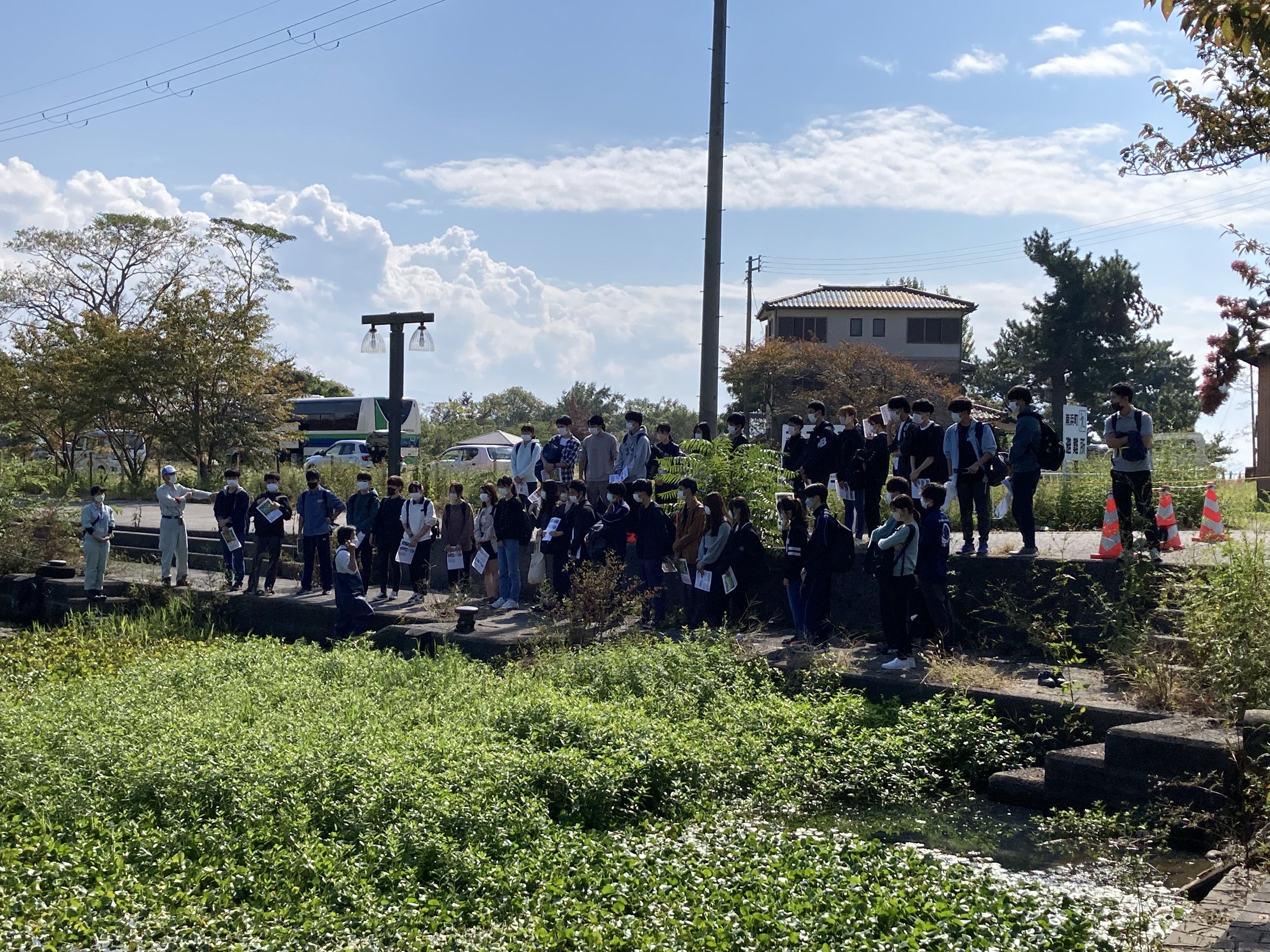News
Activity Report] [Ichigaya] Environmental Conservation of Lake Biwa - Lake Biwa Tourism! The Future of Environmental Volunteerism 2022 by University Students (9/14,10/16)
- October 27, 2022
Environmental Conservation of Lake Biwa - Lake Biwa Tourism! The Future of Environmental Volunteerism 2022~ as Considered by University Students
1. dates Online course, preliminary briefing September 14, 2022 (Wed.)
Practical session (volunteer activities) October 16, 2022 (Sun.) 2.
2. location Zoom ・Lake Biwa, Shiga Prefecture
3. outline
Volunteer event organized by Kansai University "Environmental Conservation of Lake Biwa - Lake Biwa Tourism! The future of environmental volunteerism by university students 2022". This event consisted of two parts: an online lecture on September 14 (Wed.) and an extermination activity on October 16 (Sun.), in which a total of 19 students from Kansai University participated. In the first half of the online lecture, Mr. Katsuki Nakai, Special Researcher at Lake Biwa Museum, Shiga Prefecture, gave a lecture on the theme of environmental conservation of Lake Biwa (especially measures against invasive alien species), and the students learned about the current status of environmental conservation in Lake Biwa. On the 16th, the students mainly worked on the extermination of the Nagaetsunogeito, which is designated as an invasive alien species, at the Minamihama Fishing Port in Nagahama City. The site of this activity was chosen because the fishermen's cooperative was having trouble getting their anchored boats out of port due to the presence of a colony of horned goat weevils. The participants worked hard to exterminate the plants, although it was hard work to pull them out of the lake because they were growing near the water. The participants also shared roles and cooperated with each other, which created a sense of unity among them, and they were able to enjoy a sense of accomplishment when they were finally able to clean up all the areas targeted for extermination. The Ichigaya Volunteer Center hopes to continue conducting joint volunteer activities in cooperation with Kansai University in the future.
4. number of student participants Online lecture and pre-briefing 30 (10 from Hosei University, 18 from Kansai University, 2 from Meiji University)
Practical part (volunteer activities) 38 (Hosei University 9, Kansai University 29)
Impressions of participating students
The preconceived notion that waterweed treatment is a quick process was completely dispelled by this volunteer activity. Images and videos alone do not convey the difficulty of the work at all, and I was able to understand it by actually doing it. I think this applies not only to waterweed treatment but also to other things as well. Therefore, I would like to think more about things not only from the sidelines, but also after practicing. I also felt a strong sense of accomplishment, even though it was quite hard work. I have lived my life almost exclusively for myself, but I felt how good it felt to move my body for the sake of others. I am glad I participated. (Tatsuya Inami, 3rd-year student, Department of Mechanical EngineeringFaculty of Science and Engineering )
This was my first visit to Lake Biwa and it was a very valuable experience for me. When I first arrived at the site, I was worried that I would not be able to finish the trip in a day when I saw the overgrown Nagaetsunogeitou. My equipment was heavy, the weather was sunny and the temperature was high, and it was very physically demanding. However, as I watched the members of Kansai University working hard around me and talked with local fishermen and prefectural government officials, I did not care about how hard I was working. I wanted to somehow clean up the site in one day, so I did my best to remove the debris. In the end, I was very happy that we were able to remove most of the hornwort with the help of the other groups. One of the board members said, "This work will not be completed in one go, but thanks to our achievement this time, we will only have to do one-tenth of the work next time. It will definitely help the next time. I learned that nothing is ever in vain. I thought that this is the beauty of volunteering. (Sakiki Muraoka, freshman, Department of Sustainability StudiesFaculty of Sustainability Studies )
My first time at Lake Biwa was clearly not for tourists, with green aquatic plants floating all around. But this is the other side of the lake, alongside the Lake Biwa reflected in the brochure. The extermination was hard work, far more than I had imagined, and I was reminded of the depth of the roots of the plants and animals' ability to reproduce in the absence of natural enemies. What impressed me was the relationship between the main organization responsible for extermination and local governments such as Shiga Prefecture and Maibara City. There are various reasons why harmful species are brought into the local environment, and it made me think about the difficulty that local governments must be involved in their extermination. We worked for about 3 hours and achieved about 5 bears' worth of extermination, but he said that there is no such thing as complete extermination. Water flows from high to low. Unless there is a backflow, the users of this water would not know that there are creepy invasive species floating in it, I thought as I tore off the hardened stems that had become entangled with the surrounding debris. (Risaki Takahashi, second-year student Department of JapaneseFaculty of Letters )
-

Participants receiving an explanation at Minamihama Fishing Port in Nagahama City
-
Extermination of an invasive plant (Nagaetsunogeitou)
-
Students conducting extermination activities from a small boat
-
Group photo with students from Kansai University

